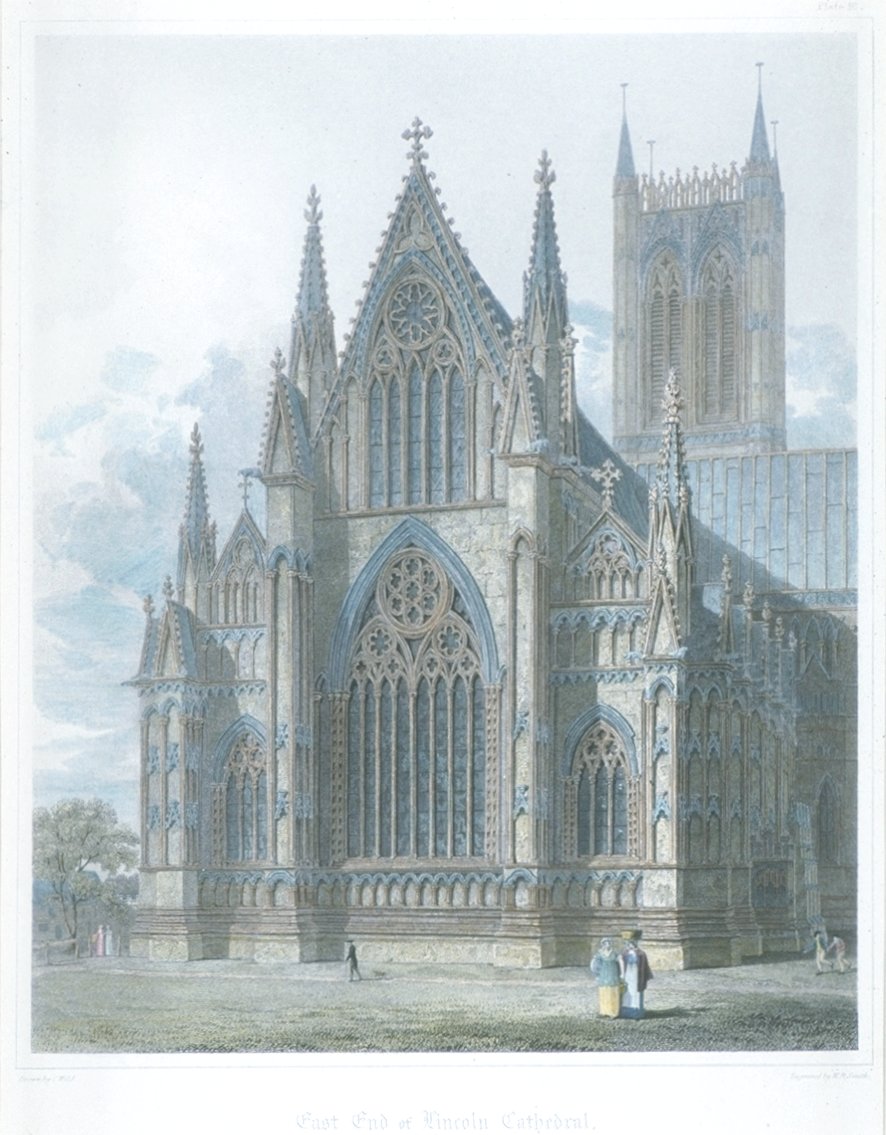East End of Lincoln Cathedral
Charles Wild (1781 - 1835)
William Raymond Smith
Coloured engraving
1819
-
About the work
- Location
-
Country: Other
City: other locations abroad
This early 19th-century view shows worshipers leaving Lincoln Cathedral after a service.
The construction of the current Cathedral was initiated by St Hugh of Lincoln, Bishop of Lincoln, after an earthquake destroyed the former cathedral in 1185. From 1300 to 1549 Lincoln Cathedral was reported to be the tallest structure in the world with a central spire 484 feet high, although the accuracy of this measurement is disputed. In 1549 the cathedral lost this status when the central spire collapsed, never to be rebuilt. However, it remains the third largest cathedral in Britain, after St Paul’s in London and York Minster. It was praised by art critic and social critic John Ruskin (1819-1900) as ‘out and out the most precious piece of architecture in the British Isles and roughly speaking worth any two other cathedrals we have.’ Lincoln Cathedral has featured in D. H. Lawrence’s novel ‘The Rainbow’ (1915), Ken Follett’s ‘The Pillars of the Earth’ (1989) and in the film ‘The Young Victoria’ (2009).
These two engravings were published as part of Charles Wild’s series of 16 plates titled ‘Illustration of the Architecture and Sculpture of the Cathedral Church of Lincoln’, published by W. Bulmer in 1819.
-
About the artist
Charles Wild was born in London. He was apprenticed to draughtsman Thomas Malton junior who, like Wild, specialised in architectural subjects. He exhibited at the Royal Academy and the Society of Painters in Water Colours, becoming Treasurer of the Society from 1823 and Secretary from 1827 to 1831. Most of his exhibited works were views of cathedrals and churches in England, Northern France, Belgium and Germany. He made several series of aquatints of English Cathedrals, beginning with ‘Twelve Perspective Views of the Exterior and Interior Part of Canterbury’ (1807). He is best known for producing 58 of the 100 views in William Henry Pyne’s ‘History of the Royal Residences’ (1819). By 1832 he was blind. He died at home in Piccadilly.
-
Explore
- Places
- Subjects
- Materials & Techniques
-
Details
- Title
- East End of Lincoln Cathedral
- Date
- 1819
- Medium
- Coloured engraving
- Acquisition
- Purchased from the Baldur Bookshop, Richmond, May 1960
- GAC number
- 5149